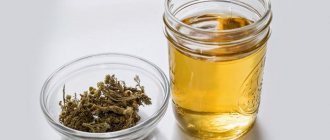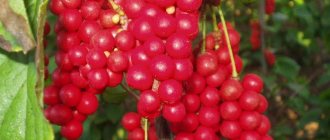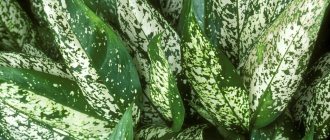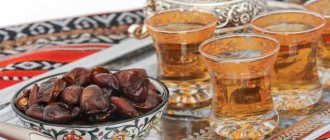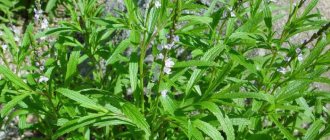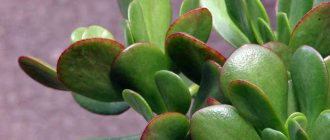Many of us are familiar with beautiful thin branches with bright orange lantern cups, which are used to decorate the interior. They are popularly called Chinese lanterns. This is a physalis plant. Red glossy berries are hidden under the beautiful caps. Branches with miniature fruits are also often used for decorative purposes. It turns out that there are also edible species of this plant that are very beneficial for health.
What does it look like
Physalis is a perennial plant belonging to the Solanaceae family (which also includes tomatoes, potatoes, and eggplants). Moreover, this is the largest genus of all members of the family. The plant is low - 60-100 cm, with a grassy stem that becomes woody at the root. The roots of the perennial branch well, and bushes quickly grow in place of the shoots. The leaves are wide, with pointed ends, teeth along the edges. During flowering, the buds produce bell-shaped, cream- or vanilla-colored cinquefoils. When flowering ends, a small ball-shaped fruit is formed from the ovary. It is covered on all sides with leaves that fold into a neat little case. The property of hiding the fruit in a calyx is a distinctive feature of physalis.
The sepals grow faster than the internal contents. When the fruit is fully ripe, the shell changes color and becomes dry. Initially, the calyx has a light green color, then it changes to yellow-orange, scarlet, purple, depending on the variety. The color of the fruit is approximately in the same color range.
Outwardly, they look like cherries or cherry tomatoes. Their weight depends on the variety and ranges from 2-10 grams. The fruits of vegetable varieties that are grown for harvest are much larger - they can weigh up to 90 g. According to the botanical classification, the fruit of physalis is a berry, but in common parlance it is often called a vegetable.
Strelizia
A plant of rare beauty, it has incredibly exquisite orange flowers that rise above the plant on long erect stems (“arrows”). Strelitzia is popularly called the “bird of paradise.” Its flower has a harmonious combination of orange and blue petals between thick oval leaves and bright green. It reaches a height of 100 cm.
For active growth, the following conditions are necessary:
- frequent watering;
- bright lighting, including direct sunlight;
- moderate humidity;
- location - west, south and east.
Peculiarities! Under optimal conditions, Strelitzia blooms 2-3 times a year: in spring, summer and winter. In autumn the plant is dormant. However, this requires a lot of space and a lot of additional light.
Varieties
There are decorative and edible plant species. The former are used to decorate the landscape and arrange bouquets, the latter - in cooking and folk medicine. In total, 120 varieties of physalis are known. They differ in fruit size, taste, and cup color. The most popular decorative species is common physalis. Botanical name: Physalis alkekengi. It is also called Physalis Franchet. René Franchet is a botanist from France who discovered and studied this plant in the late 19th century. A characteristic feature of decorative species is beautifully located cups of regular shape with a diameter of 60-70 mm. The berries of these varieties are not eaten, as they are poisonous.
Food species of the plant are divided into berry and vegetable according to the size of the fruit and taste properties. Vegetables have a bitter skin; it is removed when cooking. Berry fruits have a sweet taste; preserves and jams are made from them. The Mexican variety is a vegetable variety. It tastes like regular tomatoes. The fruits are large, yellow, light green, purple. Popular berry varieties:
- Strawberry
- Pineapple
- Confectionery
- Plum
- Korolek
They can be eaten fresh without heat treatment. Edible varieties have more faded colors than decorative ones. The taste of the berries is mainly sweet, with sourness. Some types have a spicy taste.
General characteristics of the flower
Physalis, meaning “bubble” in Greek, has over a hundred plant species distributed in southern Europe, Asia (all the way to Japan), in the tropics and subtropics of Central and southern North America. Among them there are so-called strawberry and vegetable species of physalis with edible fruits. The first of those named are low-growing bushes, studded with fragrant small boxes of bright yellow color. Their vegetable-type relatives have rather large, tasty fruits of yellow, green or purple color.
As a rule, they do not tolerate wintering, because... These are heat-loving plants. They were known in their homeland long before Columbus.
Among the ancient Indians, who called the tasty berries small tomatoes (tomatillos), they were much more popular as food than tomatoes.
The decorative type of physalis, Physalis Franchet, differs from other varieties of similar plants by its picturesque clusters of bright bubbles. Their berries are not suitable for eating due to their bitter taste and unpleasant odor. In frosty winter, the bitterness of the fruits is significantly reduced, however, it is still not recommended to use them for food. Since these fruits are harmless, they can be successfully used as food coloring.
Bouquets of bright fruit boxes of this type are indispensable when creating design projects; they look great in photographs.
Benefit
Physalis fruits have high nutritional value. They contain a lot of vitamin C, K, PP, B1, B6. They contain minerals: magnesium, phosphorus, iron. In addition, they have:
- sucrose
- pectins
- carotenoids
- quercetin
- lycopene
- tannins
- organic acids (malic, citric, caffeic, tartaric)
Thanks to the vitamin complex contained in physalis, eating berries has a general strengthening effect on the body and increases resistance to viruses. Dietary fiber contained in the pulp helps the digestion process, increases intestinal motility, and removes harmful substances. The fruits of the plant have the following properties:
- anti-inflammatory
- choleretic
- diuretic
- painkiller
- bactericidal
The berries contain antioxidants that prevent healthy cells from degenerating into atypical ones, thereby preventing the development of cancer. Vitamins B and C have a positive effect on the functioning of the central nervous system and strengthen the cellular structure. Nicotinic acid prevents the formation of cholesterol plaques inside blood vessels. Potassium regulates blood pressure and accelerates metabolic processes in cells. The juice secreted by the fruit helps heal wounds on the skin. With the help of decoctions and tinctures of edible types of berries, diseases such as:
- bronchitis, colds, flu;
- cystitis, prostate;
- dermatophytosis, skin mycosis;
- kidney stone disease;
- hypertension.
Traditional medicine recipes
To treat various pathologies, the following types of drinks are used: tea, decoction, alcohol tinctures, freshly squeezed juice.
Berry decoction
25 g of dried physalis fruits are poured with boiling water in a volume of 400 ml, the dishes are placed on low heat. Without bringing to a boil, keep covered for 15 minutes. Then remove from the stove, cool and filter. The decoction is taken in a third of a glass 2-3 times a day for diseases of the respiratory tract, kidneys, and stomach pain.
Ointment
To heal cuts, relieve inflammation on the skin, and eliminate joint pain, this composition is made. The berries are finely chopped or crushed in a blender. Add olive oil in a 1:1 ratio and mix well. The mixture is infused in a dark place for three weeks, then the mass is squeezed out and the cake is removed. The ointment is applied to the affected areas 2-3 times a day until the symptoms disappear.
Planting and caring for Physalis in open ground
The flower takes root well in our climate zone, caring for it is not labor-intensive, even beginner, inexperienced gardeners can handle it.
The Physalis flower is very easy to care for. The plant needs periodic watering, but does not like an overly humid environment. It needs to be planted in an open, sunny space. There are no special preferences for soil; garden, fertile soil is perfect. The soil should be well drained and moisture permeable. The flower needs to be regularly fed with organic fertilizers. Substances are added to the soil after watering it. It is also necessary to periodically loosen the soil to remove weeds.
Growing Physalis from seeds
The seed propagation option is quite simple. Physalis seeds have a high percentage of similarity over four years. Before sowing, the seeds should be soaked in a light salt solution. The floating seeds are thrown away, the rest are suitable for planting. It is also advisable to soak the seeds for about half an hour in a solution of potassium permanganate before sowing. This disinfects them and will prevent the development of plant diseases.
Seeds are planted in open ground in mid-April and May.
The distance between seeds should be at least 10-15 cm, row spacing - 30 cm. Dense planting will need to be thinned out, keeping a distance between specimens of about 20-25 cm. Autumn sowing of seeds is carried out in October.
Planting Physalis seedlings
Physalis seedlings are grown for planting in mid-latitudes, where April and May can be rainy, with sudden temperature changes. Sow seeds in a container or individual planting cups in mid-March. Before planting, they must be soaked in a solution of potassium permanganate for half an hour. The planting is regularly ventilated and kept in a warm place without drafts. The first shoots appear within a week. Grown seedlings can be fed with organic fertilizers, then they will be stronger and fleshier.
After the appearance of 5-6 strong leaves, the flower seedlings can be transplanted to the main place of growth.
The weather will tell you when to plant Physalis in open ground. The earth should warm up well, and the possibility of morning frosts and sudden cold snaps should also be excluded. Seedlings are often planted in the garden in the middle or end of May. A crop planted with seedlings will bloom faster and the harvest will be early.
Tall species need a garter. This must be taken into account when planting. Such bushes are often branched; the distance between specimens is at least half a meter.
Plant propagation
The flower reproduces by vegetative, seed method. An adult bush can be divided into several parts, each of which should contain several healthy shoots. The separated parts are immediately planted in the ground and quickly take root. A quick way to propagate a plant is by planting cuttings. To do this, choose the top, healthy shoots. It is better to prepare planting material in July. Cut branches with 2-3 developed internodes are deepened into the soil to half their height and covered with a protective cap. Periodically ventilate and moisten the planting. In a few weeks, the root system will begin to develop, and the shoot will produce new shoots.
As it is
Physalis fruits are used both as berries and vegetables. Vegetable varieties are canned, fried, stewed, and added to first courses. Berry varieties contain pectin, which has gelling properties. Therefore, they are often used to make jams. They are also used to make:
- jam
- jelly
- marshmallow
- marmalade
- candies
- jelly
You can eat both varieties fresh. Vegetable types of fruits are dried, salted for the winter, pickled, and caviar is prepared from them. The berries are dried, ground with sugar, made into puddings and purees.
Nematanthus
This flower is one of the members of the Gesneriaceae family, which has six species represented by vines, shrubs and dwarf shrubs. Some species of Nematanthus have long stems, long thin stems, and bright green leaves. The flowers can be orange, pink, red or yellow.
The orange inflorescences in question are somewhat reminiscent of hypocyrtus or columnea. Due to this, some species of this plant have been included in this family. Nematanthus is native to South America, but under the right conditions it can grow quite actively in apartments.
Nematanthus care includes:
- compliance with temperature conditions. The flower loves warmth, so during the growing season the room temperature should be 19-28 ° C in summer, and in winter (during the dormant period) - from 13 to 17 ° C;
- lighting. Nematanthus requires bright lighting, including direct sunlight. The duration of daylight hours is at least 12 hours. If the plant does not have sun, it weakens, the leaves change color;
- irrigation. During the active period, watering should be abundant and regular; it is necessary as the top layer of soil dries out. During the dormant period, the frequency and volume of soil moisture should be reduced;
- humidity. Humidity level up to 60%. It should be borne in mind that the lower the temperature in the room, the lower the humidity level should be and vice versa;
- fertilizer. Feeding is recommended only during the active period;
- position. East or west side.
Attention! During the active period, nematanthus needs daily spraying. To do this, use fresh water at room temperature.
Recipes
Before pickling, the fruits are washed under running water, damaged and wrinkled ones are selected. To make caviar and jam, you can use slightly overripe fruits.
Pickled Physalis
Before marinating, you need to prepare a sterilized glass container. Place on the bottom of the jars: two garlic cloves, a few black peppercorns, a bay leaf, a sprig of any garden herb, half a red chili pepper. Then the container is filled with physalis berries, placed tightly to each other. All ingredients are poured with boiling water. After 15 minutes, pour the water from the jars into a saucepan, add one teaspoon of salt and sugar to each jar. After the composition begins to boil, it is again poured into jars. Immediately close with airtight lids.
Sauce
This spicy sweet and sour gravy serves as an accompaniment to steaks. You will need: a cup of pineapple physalis, two sweet crumbly apples, juice of half a lemon, 30 ml of liquid honey, salt, pepper, several cilantro seeds. Apples need to be peeled, seeds removed, and finely chopped. Add crushed berries to them and simmer in mustard oil until brown. Then add seasonings and simmer for another 5-10 minutes under the lid. Then reduce the heat to minimum, add honey, pour in lemon juice, and simmer for 2-3 minutes.
Candied fruit
To prepare the dish, take strawberry varieties. For two kilograms of fruit, syrup is prepared from 2.5 kg of granulated sugar and 600 ml of water. Bring the mixture to a boil, pour in the berries. It is cooked for 10 minutes over low heat. After this, the mass rests for 5 hours. Then the procedure is repeated. After re-cooking, transfer the berries to a colander and allow the liquid to drain. The syrup can be used to make compote. The fruits are sprinkled with powdered sugar and dried in the oven at a temperature of 30-40 degrees for 2-3 hours.
Caviar
For one kilogram of physalis vegetable varieties, take 600 g of carrots, 300 g of onions. The root vegetables are grated, transferred to a deep frying pan, and fried in olive or camelina oil for 4-5 minutes. Physalis is blanched and the skin is removed. Then they are finely chopped or blended and added to vegetables. All ingredients are simmered together until soft. Towards the end of cooking, add salt, sugar and seasonings to taste.
Cocktail “Fruit Explosion”
You will need the following ingredients: strawberry physalis, mango, passion fruit, ice cream, fruit liqueur, ice. Fruits need to be peeled, seeds removed, and cut into pieces. Beat the slices in a blender along with the ice cream. The mixture is poured into a glass, a spoonful of liqueur is added, and stirred. Ice is placed on top and garnished with physalis berries.
Interesting Facts
In some countries, physalis is a symbol of love and desired pregnancy. In Europe, there is a beautiful custom of giving physalis. It is customary to present a bouquet of Chinese lanterns to a girl with whom a man wants to have a child. Branches with orange buds are also given to pregnant women - cups with berries hidden inside symbolize the fetus in the mother's womb. The wife's relatives can present such a bouquet to the future father as a sign of gratitude for the successful conception.
There is a Chinese legend about the origin of the physalis plant. In ancient times, an evil dragon swallowed the sun. Darkness reigned on Earth, people could not find each other, animals began to die. There was a brave soul who decided to return the sun to all living things. He took a lantern and went in search of the dragon. The young man wandered for a long time, and, finding an evil monster, killed him. The sun soared up, and the hero, blinded by its rays, dropped the lantern to the ground. As it fell, it turned into thousands of small lanterns that rolled across the ground and hung on the blades of grass.
There is a sign that a bouquet of physalis placed in the house drives away evil spirits and attracts prosperity and comfort. This beautiful plant fills you with positivity just by looking at its cheerful orange lanterns.
General characteristics of the plant
The Physalis plant is a perennial (less often annual) representative of the Solanaceae family. A herbaceous plant whose stem is woody at the base. Species of the genus Physalis grow in the Central and Southern regions of America.
A striking feature of this type of plant is the berry, located in a thin box formed by fused sepals.
Visually, the flower resembles a Chinese lantern, inside of which there is a small, round berry of red and orange color. In most Physalis species, the fruit is edible. When the berries ripen, the sepals dry out, maintaining their shape and changing their color. The height of the upright growing stem can reach a meter in height. Leaves are oppositely located. Flowers are evenly distributed over the entire surface of the branches, growing from their axils.
